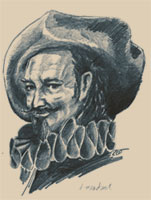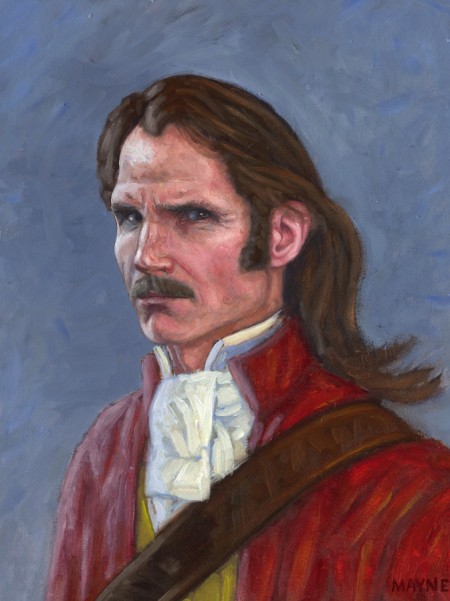 We’re thrilled to be one of 32 presses participating in this years UP Week Blog Tour. Each day this week, presses will be blogging on a different theme that highlights the value of collaboration among the scholarly community. Each day, we will round up of all the university presses that posted on that day. Today’s theme is “Throwback Thursday”. Check our our throwback to all of the historical records that have been published by The Champlain Society. Also make sure you check out these University Press blogs to see their Throwback Thursdays! Temple University Press,Wesleyan University Press,Harvard University Press, University of Washington Press, and MIT Press.
We’re thrilled to be one of 32 presses participating in this years UP Week Blog Tour. Each day this week, presses will be blogging on a different theme that highlights the value of collaboration among the scholarly community. Each day, we will round up of all the university presses that posted on that day. Today’s theme is “Throwback Thursday”. Check our our throwback to all of the historical records that have been published by The Champlain Society. Also make sure you check out these University Press blogs to see their Throwback Thursdays! Temple University Press,Wesleyan University Press,Harvard University Press, University of Washington Press, and MIT Press.
What must it have been like to be one of the first explorers of Canada? Or be a part of one of the first European settlements?
For over 106 years, The Champlain Society has been dedicated to advancing the knowledge of Canadian history through the publication of scholarly primary source documents from Canada’s eloquent historical figures. The initial focus was to publish the accounts of the great explorers on their voyages to Canada. However, since then, interests have broadened to include collection of letters on science, foreign policy, political affairs, governor generals, aspects of business history, and history of communities. Through its publications, The Champlain Society makes the adventures, explorations, discoveries, and opinions that have shaped Canada available to all who have an interest in history.
The material is organized into five series: Occasional Papers of the Champlain Society, Hudson’s Bay Company Series, Ontario Series, Publications of the Champlain Society, and Works of Samuel de Champlain. At different times over the years, the Society has worked in cooperation first with the Hudson’s Bay Company and then the Ontario Government to produce series of volumes on themes of mutual interest. As part of its mandate to spread awareness about Canada’s documentary heritage, the Champlain Society has published volumes of works by Samuel de Champlain, including previously unpublished documents, plates, and maps. The Society’s publication program continues with the Publications of the Champlain Society Series, presenting key and often little-known documents on aspects of the Canadian experience, edited and introduced by an expert in the field.
 Marc Lescarbot
Marc LescarbotThe first volume of The Champlain Society was Marc LesCarbot’s History of New France, published in 1907, edited by W.L Grant and Henry Percival Biggar, which shared the history of the 1524 voyage for Francis I of Giovanni da Verrazzano to North America, and the tragic efforts of Jean Ribault, René Goulaine de Laudonnière, and Dominique de Gourges to establish a Huguenot colony in modern Florida in the 1560s. Additionally it also delves into to the failed effort by Nicolas Durand de Villegagnon to establish a French presence in Brazil in 1555.
Most recently, The Collected Writings of Pierre-Esprit Radisson. Volume II: The Port Nelson Relations, Miscellaneous Writings, and Related Documents, edited by Germaine Warkentin, was published. The writings collected in The Port Nelson Relations, Miscellaneous Writings, and Related Documents are all drawn from the last four decades of Radisson’s long life. In 1682, Radisson was rejected by the HBC and to some extent by his contacts in France, and set out with Des Groseilliers to help a new Canadian-based company establish a fur trade post on the distant Nelson River. There, Radisson outwitted challengers arriving both from New England and the HBC itself, while managing at the same time to establish profitable trade relations with the local Cree. Volume II brings together the two Relations, along with Radisson’s few additional writings, and the background documents that illustrate the fundamentally European world Radisson had to survive in from 1668 to 1710.
 Pierre-Esprit Radisson
Pierre-Esprit RadissonSince the publication of the History of New France, over 100 volumes of documentary publications have been printed and increased the public’s awareness of, and accessibility to, Canada’s rich store of historical records.
The Champlain Society was founded with an expressed mandate to spread awareness of Canada’s documentary heritage and it has upheld this mandate for the past century. However, due to the rapid evolution of today’s technology, The Champlain Society transitioned all of its published material into a Digital Collection to ensure that these books continue to be easily accessible to anyone who wishes to consult them. This digital initiative is the Society’s latest effort to ensure that Canada’s historical documents remain current and continue to educate generations of Ontarians and Canadians about the past and the people whose works have shaped our imaginations.
Through its books and Digital Collection, The Champlain Society has made the adventures, explorations, discoveries, and opinions of Canada’s significant historical figures available so that the scholar, the student, or the simply curious can consult this vast body of knowledge. The Society will not rest in its mission to publish Canadian documentary materials and will continue to serve as an advocate on the proper care of, and accessibility to, Canada’s historical records.
Comments on this entry are closed.